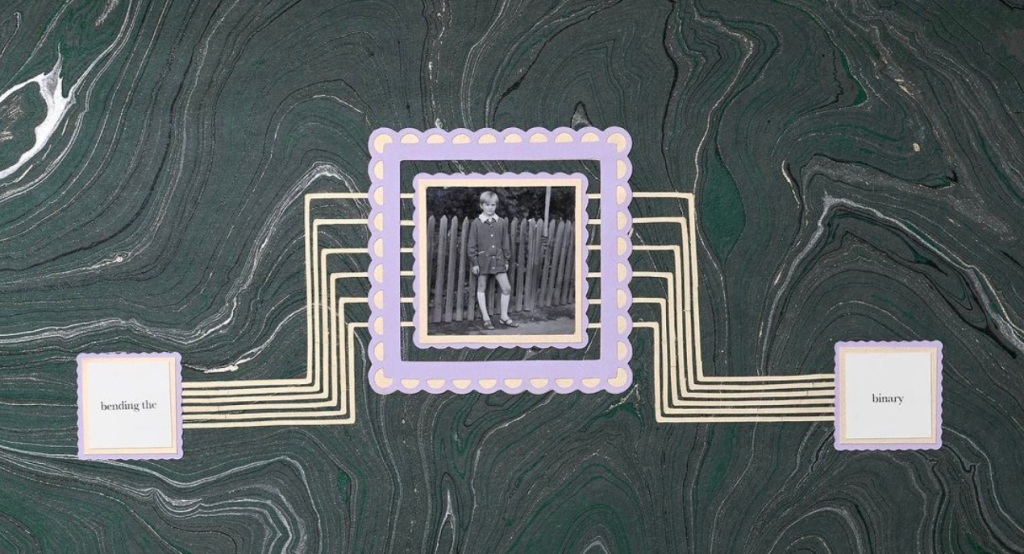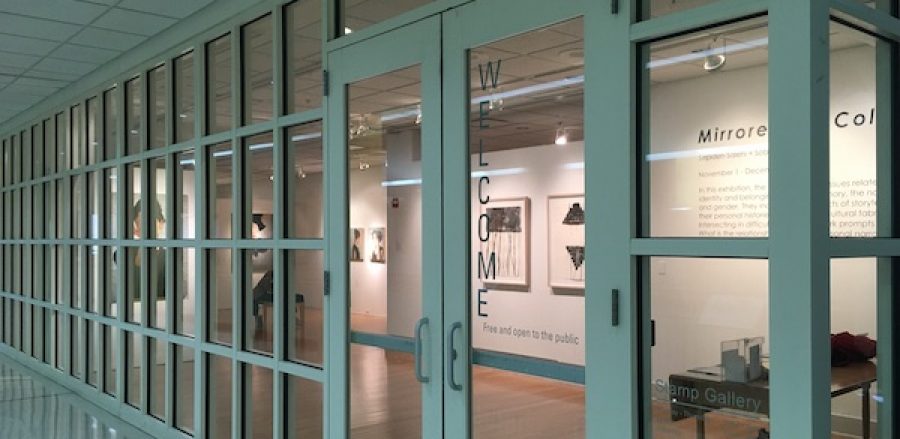Bending the Binary, and Our Perception of History
Posted: September 29, 2023 | Author: stampgallery | Filed under: Contemporary Art Purchasing Program (CAPP), Current Exhibition, Uncategorized | Tags: art, Contemporary Art, Homosocial, LGBTQ+, photography, print, stamp gallery, UMD | Leave a commentWhat We Do After from August 28 to September 30, 2023, at The Stamp Gallery | University of Maryland, College Park | Written by Rachel Schmid-James
When Brian Van Camerik began the project Homosocial, a collection of old photographs showing intimacy amongst same sex couples from the past in 2017, it could not have come at a better time. With President Donald Trump beginning his reign of terror on queer people across the country, it seemed very difficult to find hope and joy in queerness. For many young queer people, being different can feel isolating, and due to crises such as the AIDS epidemic leading to fewer older queer people, they have less elders to guide them. With Homosocial, Van Camerik shows that queer love and joy has always been around- even in times of great hardship. As described on the project’s website, “these photographs span decades and all depict same-gendered couples of men, women, and everyone in between displaying intimacy towards one another.” Throughout the series, multiple pairs are seen as described; some with arms around one another, others with hands clasped. However, what stood out to me is that none of the photographs feature the couples kissing. This adds to the power of the pieces. Queer love was forbidden in most societies in the past, and public displays of it could lead to detainment, violence, death, and/or ostracism. Many of these couples no doubt had to hide their love for each other, though that does not make these small moments captured any less romantic. It adds a deep layer of nuance, and calls attention to a hard truth: public romance is treated as a privilege.

Throughout the run of the Stamp Gallery exhibit What We Do After, the piece Processing Gender Aspirations from Homosocial has always stood out to me. Although small in dimension and seemingly simple in composition, the depth within the artwork and the project itself makes a deep impact. On a background reminiscent of rippling water flecked through with gold, a black and white photograph is centered. The photograph shows a child dressed in a uniform-like outfit complete with Mary Jane shoes. The child’s gender is not obvious, nor is it specified by artist Brian Van Camerik. Two paired sets of zig zagged lines attach the photo to three simple words, creating the phrase “bending the binary.” As explained by Van Camerik in an Instagram post for the piece,
I use microprocessing technology as a visual metaphor to illustrate how the individuals in these photographs have connected—the same way that microchips are connected on a circuit board… As a non-binary artist, I am presenting someone I wish to emulate. And while aspirational, this piece is also transgressive. Microprocessing technology operates in binary code but somehow the child thrives within this system and defies the gender binary to boot.
Processing Gender Aspirations is one of the few pieces in the Homosocial project that features only one figure, and one who also does not fit traditional ideas of the gender binary. As Van Camerik explains above, the child in this piece reflects a quiet rebellion, existing in a normal life as a person who “bends the binary.”
More than anything though, this entire series represents something that was as important back then as it is now, that queer people are normal. The poses in the photographs are no different from any photograph you may see of a cisgendered or heterosexual couple, pushing against the idea that queer people are dangerous or deviant. Queer people love and live just like anyone else does, something important to represent especially with all the anti-gay and anti-transgender legislation popping up all over the country. Joy is essential to change, something expressed through the Homosocial collection as well as the current CAPP exhibit at the Stamp Gallery. At the very bottom of the Homosocial website, a dedication can be found, reading “For the individuals who were lost, silenced, or hurt because of whom they loved.” Remembering the faces of those who came before in the struggle for LGBTQ rights and their joy in the face of adversity can help us find our way and begin to build a better life for all people.
Homosocial’s work is included in What We Do After at The Stamp Gallery of the University of Maryland, College Park, from August 28 to September 30, 2023.
- For more information on Homosocial, visit https://homosocial.xyz/.
- For more information on What We Do After, The CAPP Collection, and related events, visit https://stamp.umd.edu/centers/stamp_gallery.
